 |
Foodoric and associated companies are chemicals manufacturing companies operated in India USA UAE Europe Asia and other countries around the world. The associates have one or more of certifications like ISO-9001, ISO-14001, ISO-22000:2005, FSSC 22000; OHSAS 18001; Kosher and Halal Certified; HACCP, FSSAI and FDA - GMP approval. Buyers are assured of good quality and CIF wholesale and retail price for supplies of our Caustic Potash or Potassium Hydroxide Pellets. |

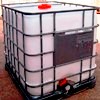
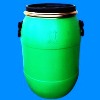
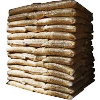
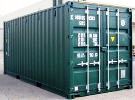

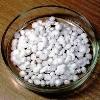
Potassium Hydroxide or Caustic Potash Pellets Flakes Powder USP NF BP ACS Reagent FCC Food Grade Manufacturers Suppliers
Potassium Hydroxide Pellets
Caustic Potash Flakes Powder USP NF BP ACS Reagent FCC Food Grade

Caustic Potash or Potassium Hydroxide CAS Number 1310-58-3, Molecular Formula: KOH, Molecular Weight: 56.11
Potassium Hydroxide FCC Food Grade Specifications
Caustic Potash
KOH Formula wt 56.11
INS: 525 CAS: [1310-58-3]
DESCRIPTION
Potassium Hydroxide occurs as white or nearly white pellets, flakes, sticks, fused masses, or other forms. Upon exposure to air, it readily absorbs carbon dioxide and moisture, and it deliquesces. One gram dissolves in 1 mL of water, in about 3 mL of alcohol, and in about 2.5 mL of glycerin. It is very soluble in boiling alcohol.
REQUIREMENTS
Identification: A 1:25 aqueous solution gives positive tests for Potassium.
Assay: Not less than 85.0% and not more than 100.5% of total alkali, calculated as KOH.
Carbonate (as K2CO3): Not more than 3.5%.
Insoluble Substances: Passes test.
Lead: Not more than 2 mg/kg.
Mercury: Not more than 0.1 mg/kg.
Potassium Hydroxide BP Ph Eur Grade
Caustic Potash
KOH -- 56.11 -- CAS 1310-58-3
DEFINITION
Potassium hydroxide contains not less than 85.0 per cent and not more than the equivalent of 100.5 per cent of total alkali, calculated as KOH.
CHARACTERS
White, crystalline, hard masses, supplied as sticks, pellets or irregularly shaped pieces, deliquescent in air, hygroscopic, absorbing carbon dioxide, very soluble in water, freely soluble in alcohol.
IDENTIFICATION
A. Dissolve 0.1 g in 10 ml of water (this solution is used for identification test B). Dilute 1 ml of the solution to 100 ml with water. The pH of this solution is not less than 10.5.
B. 1 ml of the initial solution prepared in identification test A gives reaction of potassium.
TESTS
Solution S1:
Dissolve 2.5 g in 10 ml of water. Carefully add 2 ml of nitric acid, with cooling, and dilute to 25 ml with dilute nitric acid.
Solution S2:
Dissolve 10 g in 15 ml of distilled water. Carefully add 12 ml of hydrochloric acid, with cooling, and dilute to 50 ml with dilute hydrochloric acid.
Appearance of solution:
Dissolve 5 g in carbon dioxide-free water and dilute to 50 ml with the same solvent. The solution is clear and colourless.
Carbonates:
Not more than 2.0 per cent, calculated as K2CO3.
Chlorides:
Dilute 10 ml of solution S1 to 15 ml with water. The solution complies with the limit test for chlorides (50 ppm).
Phosphates:
Dilute 5 ml of solution S1 to 100 ml with water. The solution complies with the limit test for phosphates (20 ppm).
Sulphates:
15 ml of solution S2 complies with the limit test for sulphates (50 ppm).
Aluminium: If intended for use in the manufacture of hem dialysis solutions, it complies with the test for aluminium. Dissolve 20 g in 100 ml of water and add 10 ml of acetate buffer solution pH 6.0. The solution complies with the limit test for aluminium (0.2 ppm). Use as the reference solution a mixture of 2 ml of aluminium standard solution (2 ppm Al), 10 ml of acetate buffer solution pH 6.0 and 98 ml of water. To prepare the blank use a mixture of 10 ml of acetate buffer solution pH 6.0 R and 100 ml of water.
Iron:
Dilute 5 ml of solution S2 to 10 ml with water R. The solution complies with the limit test for iron (10 ppm).
Sodium:
Not more than 1.0 per cent of Na, determined by atomic absorption spectrometry.
Heavy metals:
Dilute 10 ml of solution S2 to 20 ml with water. 12 ml of the solution complies with limit test A for heavy metals (10 ppm). Prepare the standard using lead standard solution (1 ppm Pb).
Potassium Hydroxide USP NF
KOH 56.11 --- [CAS 1310-58-3].
Potassium Hydroxide contains not less than 85.0 percent of total alkali, calculated as KOH, including not more than 3.5 percent of K2CO3.
Identification: A solution (1 in 25) responds to the tests for Potassium.
Insoluble substances: Dissolve 1 g in 20 mL of water: the solution is complete, clear, and colorless.
Heavy metals: Dissolve 0.67 g in a mixture of 5 mL of water and 7 mL of 3 N hydrochloric acid. Heat to boiling, cool, and dilute with water to 25 mL: the limit is 0.003%.
Potassium Hydroxide ACS Analytical Reagent
KOH
Formula Wt 56.11
CAS Number 1310-58-3
NOTE. Reagent potassium hydroxide usually contains 10-15% water.
REQUIREMENTS
Assay and potassium carbonate: 85% KOH and 2.0% K2CO3
MAXIMUM ALLOWABLE
Chloride (Cl): 0.01%
Nitrogen compounds (as N): 0.001%
Phosphate (PO4): 5 ppm
Sulfate (SO4): 0.003%
Ammonium hydroxide precipitate: 0.02%
Heavy metals (as Ag): 0.001%
Iron (Fe): 0.001%
Nickel (Ni): 0.001%
Sodium (Na): 0.05%

Caustic Potash or Potassium Hydroxide Pellets Manufacturers Suppliers:
Foodoric Group of Cos
India, USA, UAE, Europe
e-mail: info@foodoric.com

Copyright
Last
14 March, 2022
Caustic Potash or Potassium Hydroxide Pellets Suppliers, Exporters, Importers, Manufacturers offering good CIF wholesale and retail prices, quality and online information.
A jackal woke up early in the morning and went in to the plains. He looked at his long shadow in the rising morning sun and said to himself, "I must have a camel for my meal today".
He kept moving around till noon and it was getting hot and the jackal was tired. He was also hungry and thirsty. He looked at his small shadow in the mid-day sun. He murmered, "I was only joking about the camel, a mouse will do".